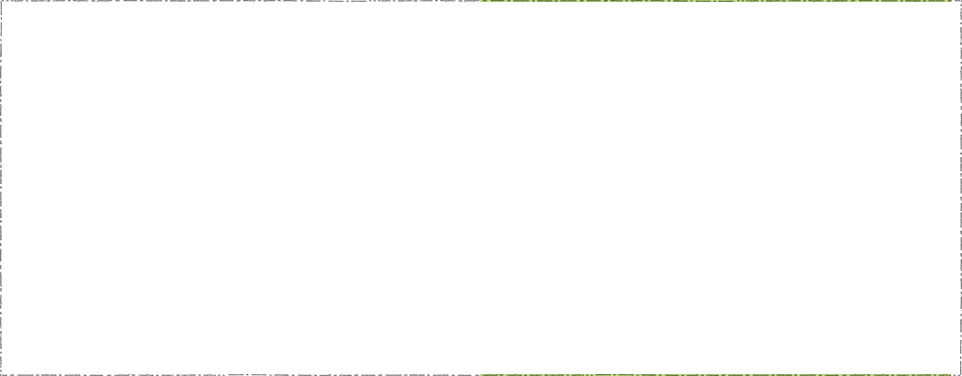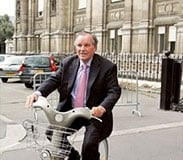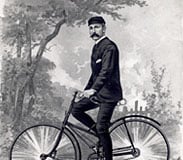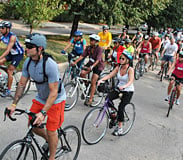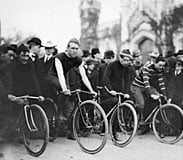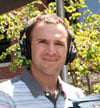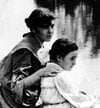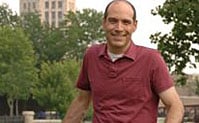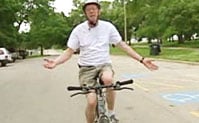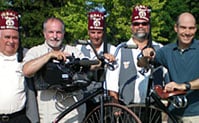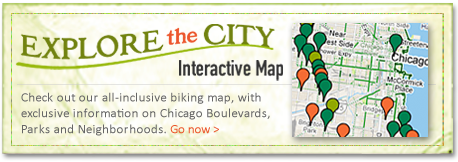Although the first American bicycle race took place on May 24th, 1878 in Boston, Massachusetts, it was not long before Chicago became a premier location for cycling races. The most popular Chicago race was the Pullman Road Race, an annual Memorial Day race from Michigan Avenue and Van Buren Street to the South Side neighborhood of Pullman. The race attracted between 200 and 300 participants, the majority being members of one of the citys numerous cycling clubs. In the beginning, these "scorchers" or "fast riders" were amateur racers, but by the end of the 1890s, top-ranking racers were fully subsidized by bicycle manufacturing companies. Many of Chicagos new professional athletic racers were world record holders.
Bike racing became such a Chicago passion that Chicagoans began building cycling tracks. These tracks not only attracted record-seekers from around the country, they also reduced the number of "scorchers" from the more tranquil park trails. In 1893, a track was constructed at 35th Street and Wentworth to host a one-week cycle competition coinciding with the Worlds Columbian Exposition. A similar track was constructed in Garfield Park. The Garfield Park bike track was a half-mile loop engineered for speed. It attracted some of the most well-known cyclists of the time, including Marshall W. "Major" Taylor, the first black athlete to be a member of an integrated professional team. When racist policies prevented Taylor from entering other Chicago races, including the Pullman, he used the track at Garfield Park to set several world records.
At the end of the 19th Century, a new type of bike race was becoming fashionable across the United States. For the next 30 years, six-day race was the most popular bicycle-racing event. The premise of the six-day race was simple: the cyclist who could cover the greatest distance in the allotted time won the event. However, promoters often required riders to cover at least 1,350 miles to qualify for prize money. Races were held for six days because this was the maximum number of consecutive days an event could run without violating the Sabbath. Chicago held numerous six-day races between the turn of the century and the 1930s. Despite the popularity of six-day races, the events came under fire from public officials who worried about the safety of marathon cycling. The Illinois Legislature soon passed a law limiting the number of hours a cyclist could race. Although the six-day race made a comeback in the 1960s and 1970s, it never regained its pre-World War I popularity.
Today, Chicago is still a prime location for bicycle racing. In the Chicago area, a cyclist can find track races, mountain bike races, or alleycat races. According to www.chicagobikeracing.com, there are more than 20 sanctioned races between October and December of 2010 within a four-hour drive of the city. Many of these races have a "beginners only field" for novice racers.

